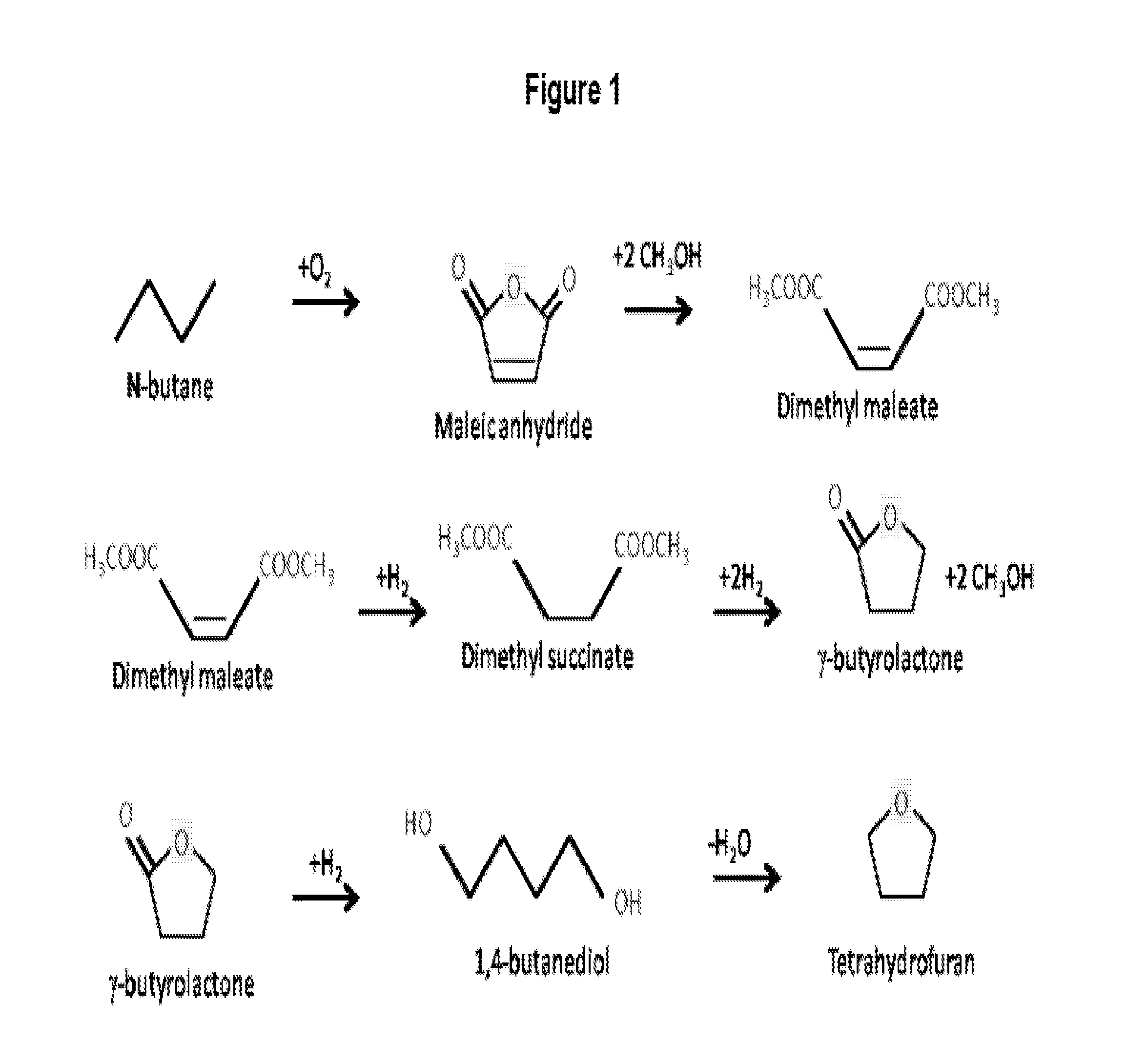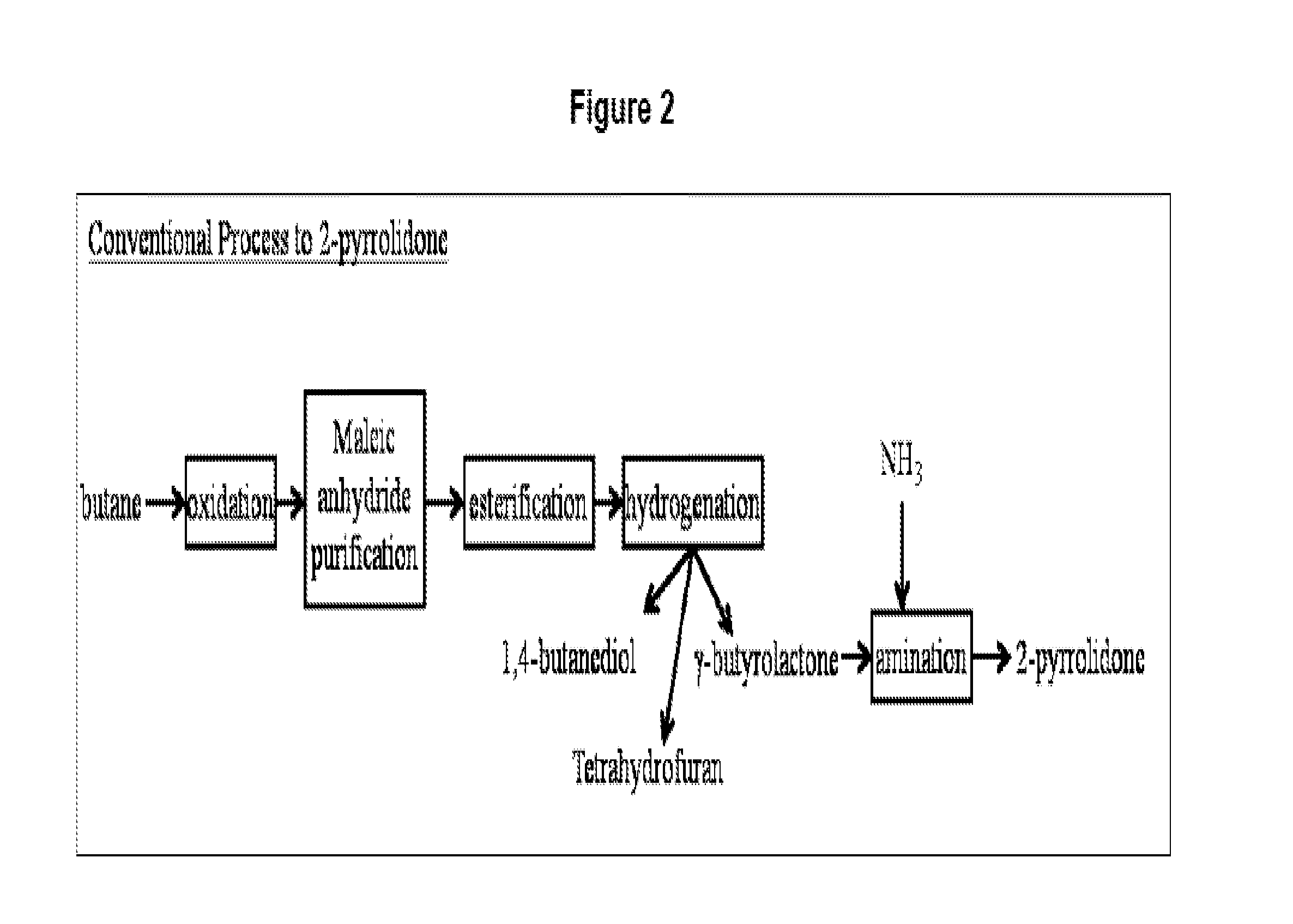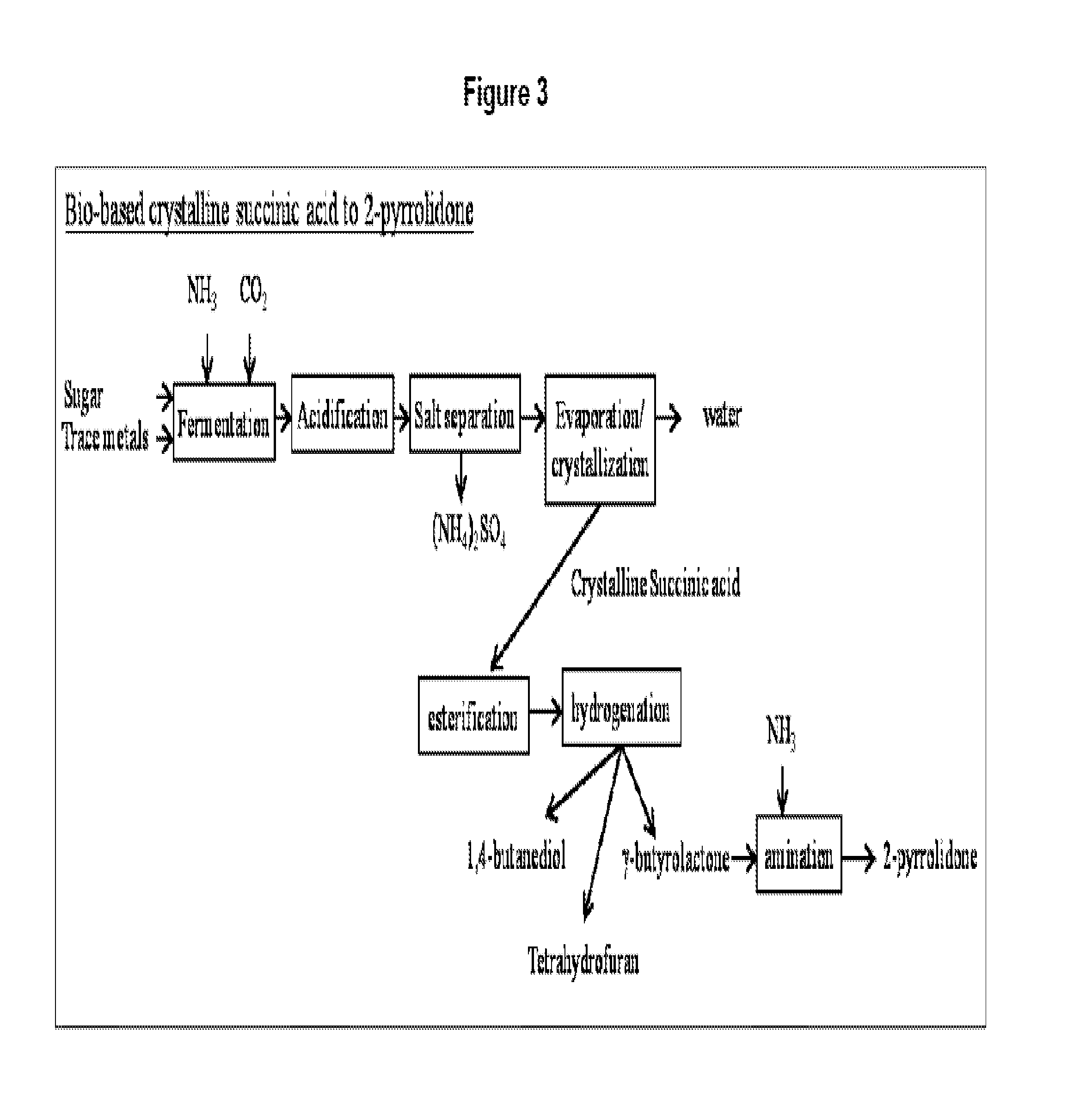Method for conversion of diammonium succinate in fermentation broth to 2-pyrrolidone and n-methylpyrrolidone
a technology of diammonium succinate and fermentation broth, which is applied in the direction of organic chemistry, etc., can solve the problems of reduced ammonia yield, temperature, pressure, and catalyst used in this test, and the conventional process of producing 2-pyrrolidone and n-methylpyrrolidone via butane or benzene oxidation to maleic anhydride is not sustainable, and achieves the effects of enhancing the production of 2-pyrrolidone, preventing the hydrolysis
- Summary
- Abstract
- Description
- Claims
- Application Information
AI Technical Summary
Benefits of technology
Problems solved by technology
Method used
Image
Examples
example 1
Generation of Fermentation Broth
[0096]Fermentation broth containing diammonium succinate was generated by means of growing KJ122 strain of Escherichia coli in a minimal medium under anaerobic condition as described in the published international patent applications WO2008 / 115958, WO2011 / 115067, WO2011 / 063055, WO2011 / 063157, WO2011 / 082378, WO2011 / 123154, WO2011 / 130725, WO2012 / 018699 and WO2012 / 082720, all of which are incorporated herein by reference. Either dextrose or sucrose was used as the source of organic carbon.
[0097]At the end of the specified time for fermentation to achieve maximum yield for diammonium succinate, the fermentation broth was removed from the fermenter and the bacterial cells were removed by microfiltration. The clarified fermentation broth was subject to ultrafiltration to remove other macromolecules such as proteins which could interfere in further downstream chemical processing involving deammoniation, cyclization, alkylation and catalyst-mediated carbonyl ...
example 2
Aqueous-Phase Diammonium Succinate Reaction at 150° C. for 6 Hours
[0100]In order to determine the efficiency of thermochemical conversion of diammonium succinate into succinimide, aqueous-phase reaction was carried out at 150° C. with the concentrated broth after activated carbon treatment. 50 ml of broth with the succinic acid concentration of 212.36 g / L was transferred to a 75-ml Parr reactor equipped with a pressure transducer, a thermowell, and a heater block. A small magnetic stir bar was added to the reactor. The system was purged under nitrogen three times and the system was under atmospheric pressure at room temperature. The heater block was set to achieve a temperature of 150° C. The temperature was monitored using a thermocouple inserted into a thermowell. A sample was taken at 6 hours after incubation at 150° C. and analyzed using HPLC apparatus as described above. The molar concentrations of succinic acid, succinimide, succindiamide and succinamic acid were measured. As ...
example 3
Reaction of Diammonium Succinate in Diglyme at 150° C. For 6 Hours
[0101]Thermochemical conversion of diammonium succinate into succinimide, succinamic acid and succindiamide was determined in solvent environment. The concentrated fermentation broth with diammonium succinate concentration of 371.43 g / L was used in this experiment without activated carbon treatment. 150 ml of fermentation broth was transferred to a 1000 ml round-bottom flask. A small magnetic stir bar was added to the flask. 250 ml of diglyme with a normal boiling point of 162° C. was added to the flask. The flask was placed in an oil bath on the top of a hot plate. The system was purged under nitrogen three times and then the system was put under vacuum around 26 inches Hg of vacuum and the stirring rate was kept at 1000 rpm. Under the vacuum, the heat was turned on and the water in the aqueous phase was allowed to evaporate. The temperature was measured through a thermocouple. Once the evaporation of water in the aq...
PUM
 Login to View More
Login to View More Abstract
Description
Claims
Application Information
 Login to View More
Login to View More - R&D
- Intellectual Property
- Life Sciences
- Materials
- Tech Scout
- Unparalleled Data Quality
- Higher Quality Content
- 60% Fewer Hallucinations
Browse by: Latest US Patents, China's latest patents, Technical Efficacy Thesaurus, Application Domain, Technology Topic, Popular Technical Reports.
© 2025 PatSnap. All rights reserved.Legal|Privacy policy|Modern Slavery Act Transparency Statement|Sitemap|About US| Contact US: help@patsnap.com



